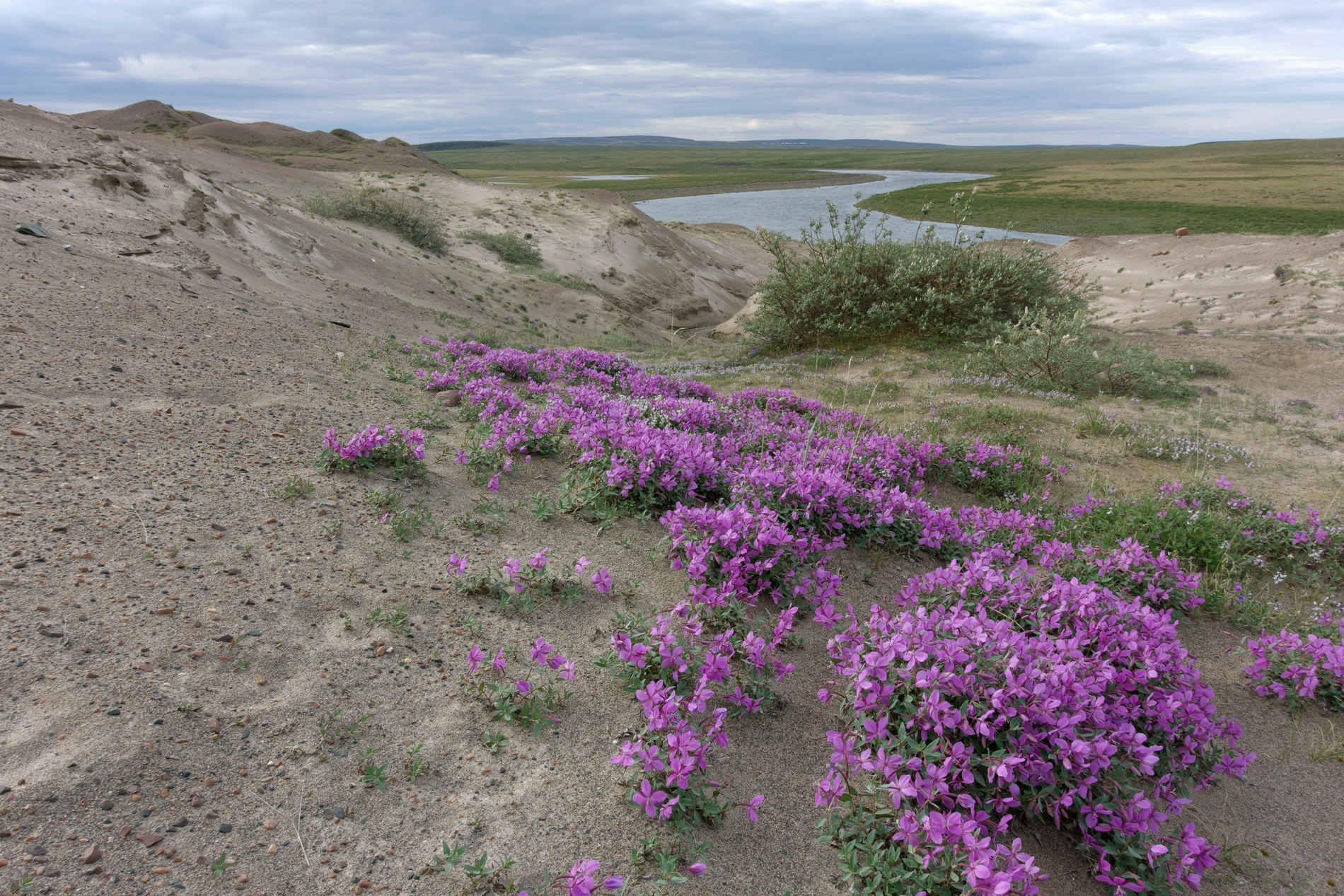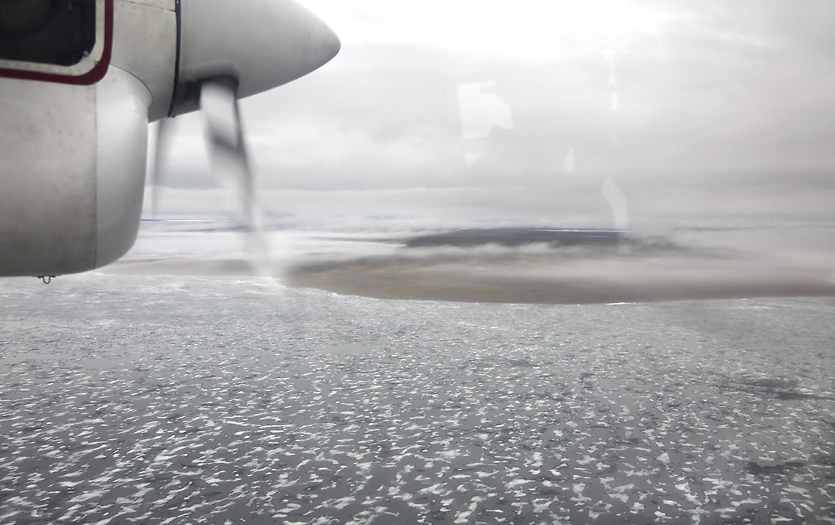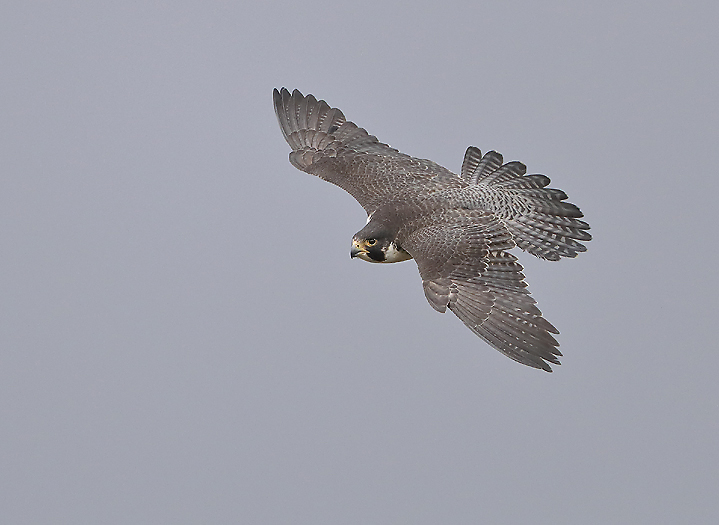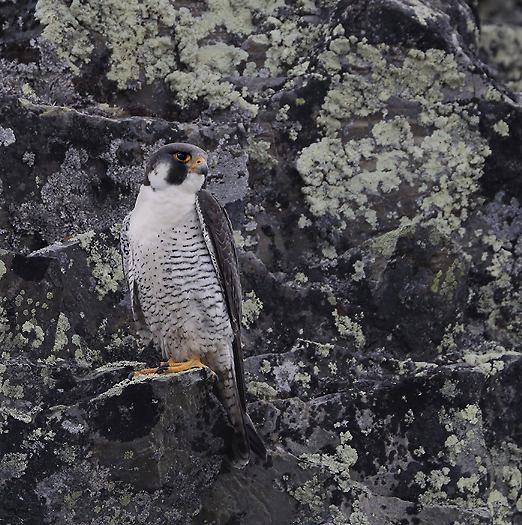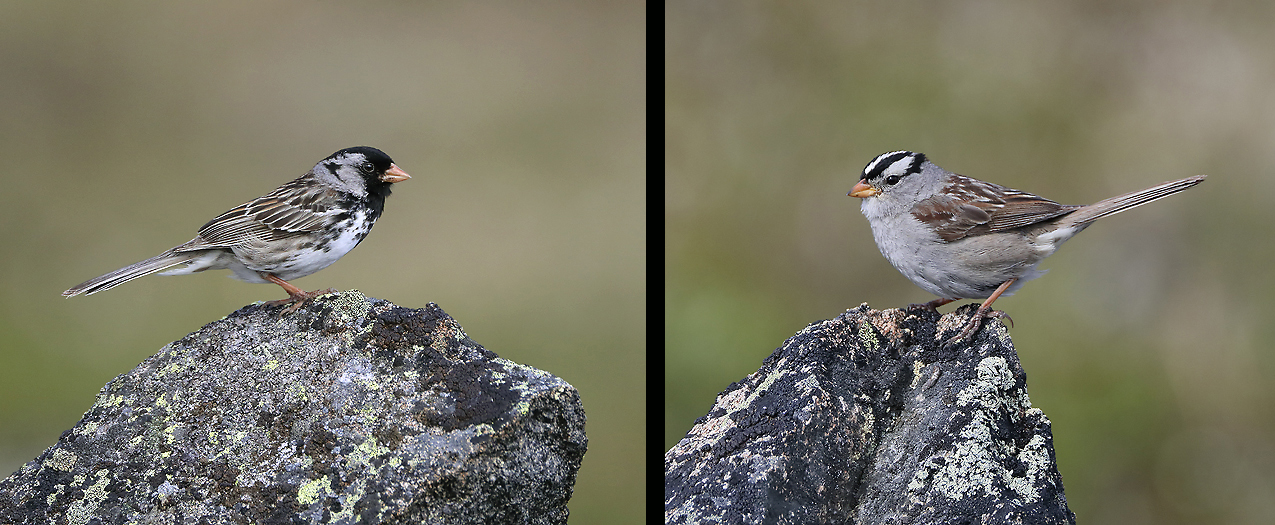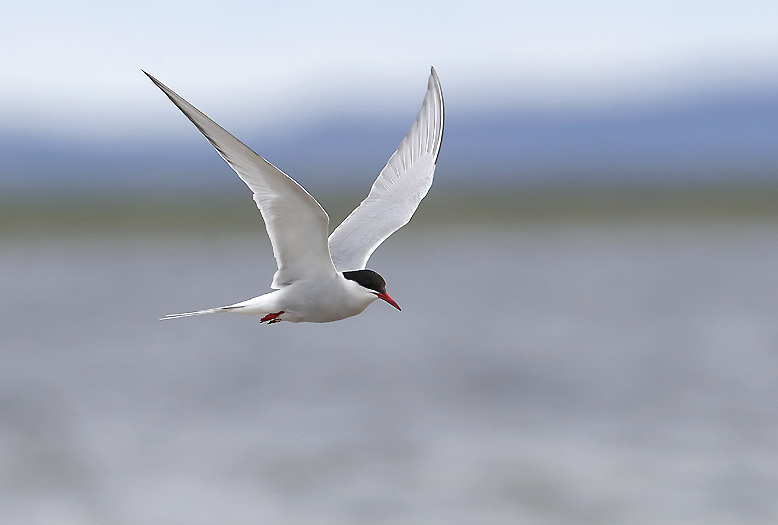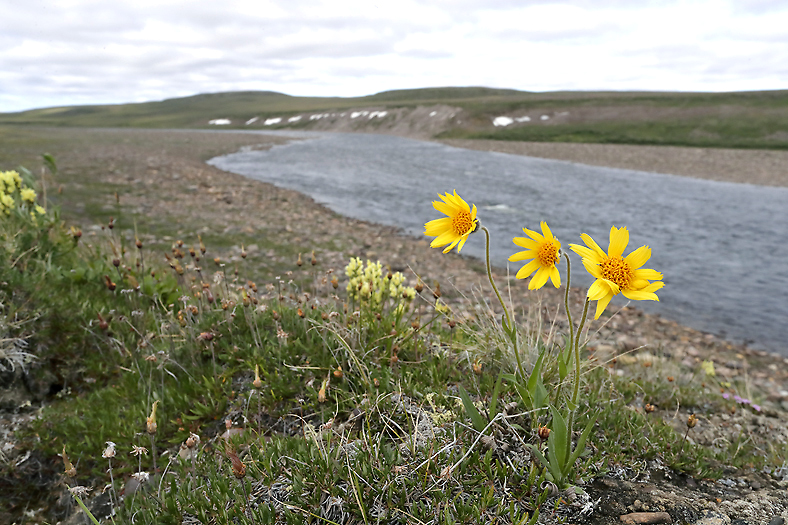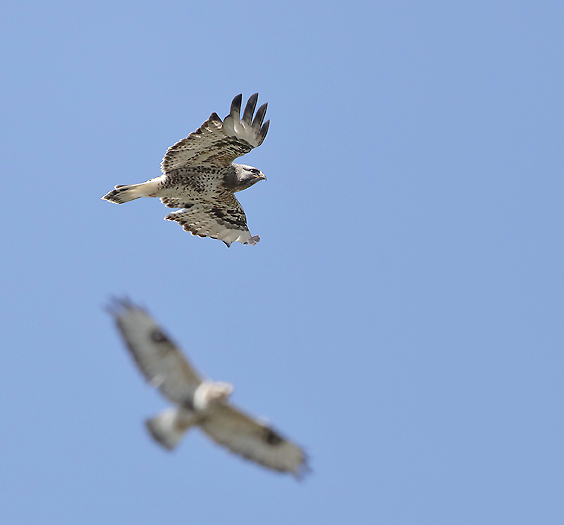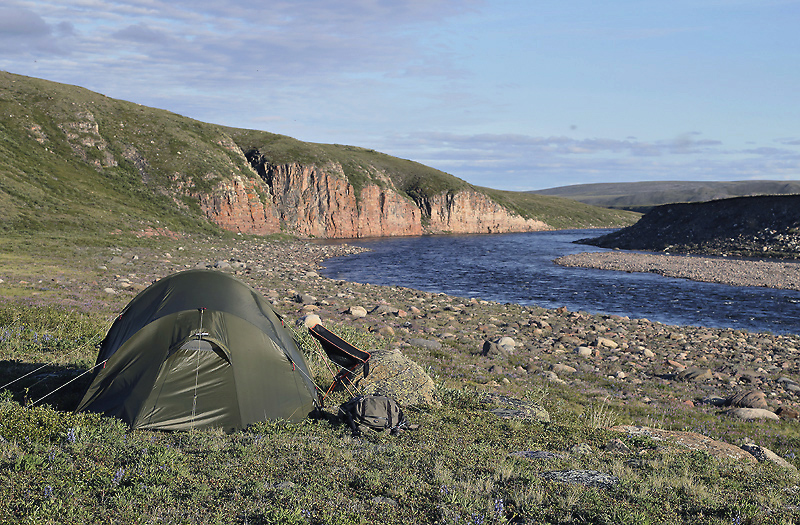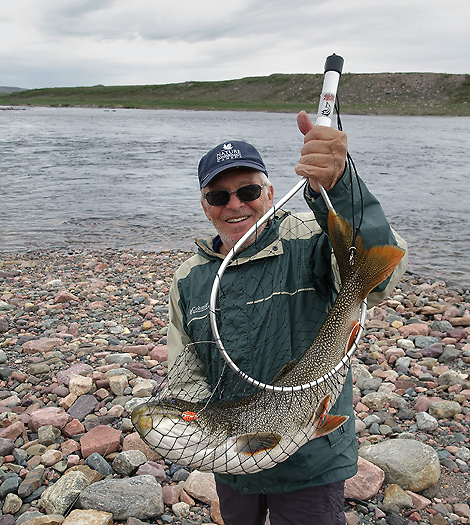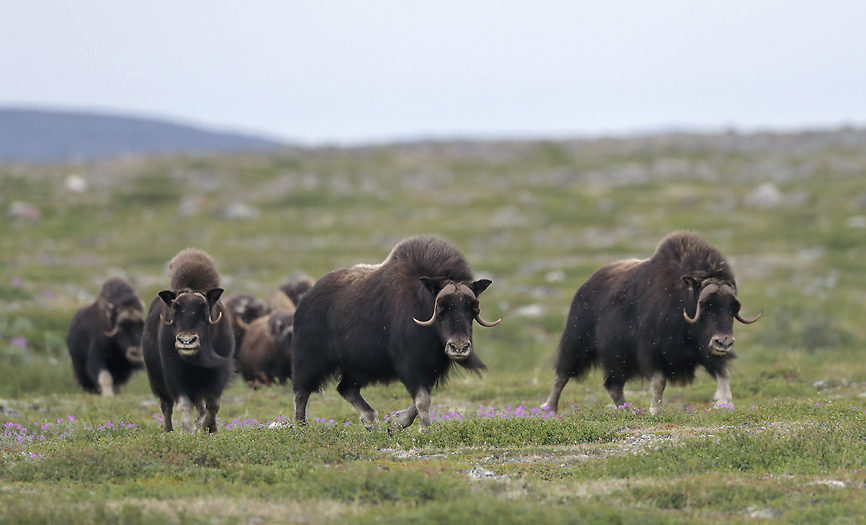THE TUNDRA OF THE BARREN LANDS.
The Barren Lands between The Great Slave Lake and the icy sea waters north of the Canadian Mainland have complete and functional ecosystems. However, heavy decline in the Caribou populations the last decades have made certain changes in some of the wildlife species populations there. It is unknown what causes the decline, if it is natural fluctuations or human influence (i.e. climate changes), but it is believed to have its roots in the latter which gives a milder climate.
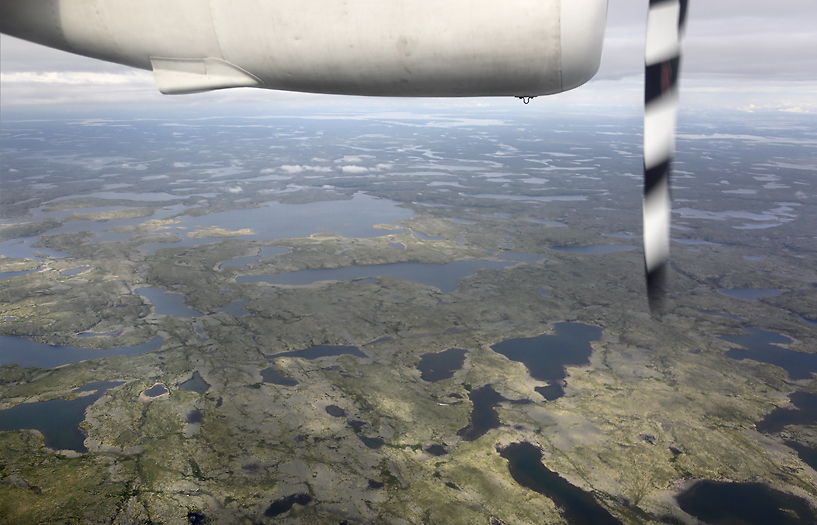
Along the way from Yellowknife to the final destination for starting the trip. Barren tundra as far the eye can see. We are now in the Arctic climate zone.
From the air we observed that most lakes now are ice free, with the exception of some greater lakes. These ice covered lakes cause low clouds and the plane (Twin Otter) is forced to go below them. We are only some tens of meters above the ground even if we had 15-20 minutes left before landing. If the plane had gone above the clouds there where possibilities that we could not fly under them again to land without risk of sight loss with possibilities of impact to ground.
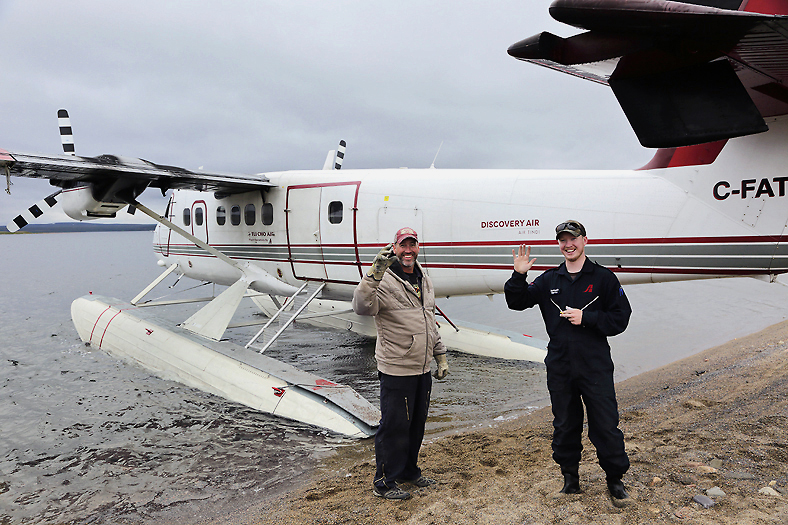
After near 2 hours in the air the pilots say goodbye to us. Together with a few Canadians I am now left alone at this huge wilderness plain for over 2 weeks. We are now in the upper part of the Burnside River water system (380m above sea level) and will use canoes as transportation method downstream between selected areas of interest.
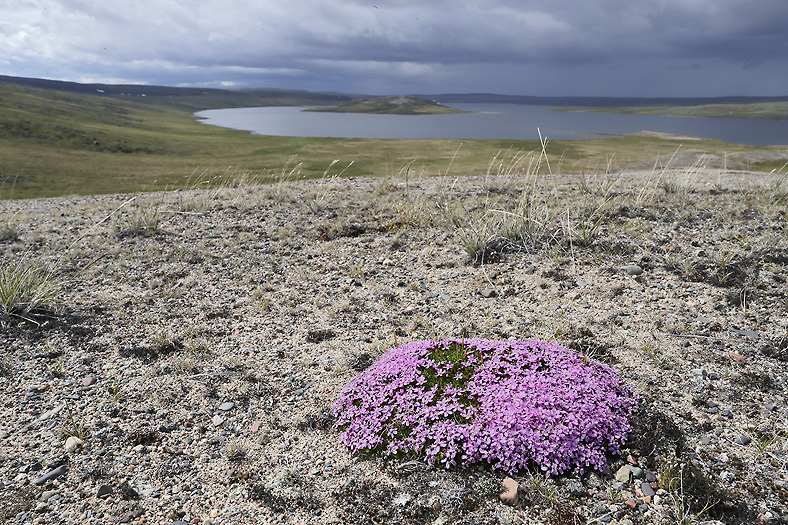
Wonderful arctic, -great to be there again.
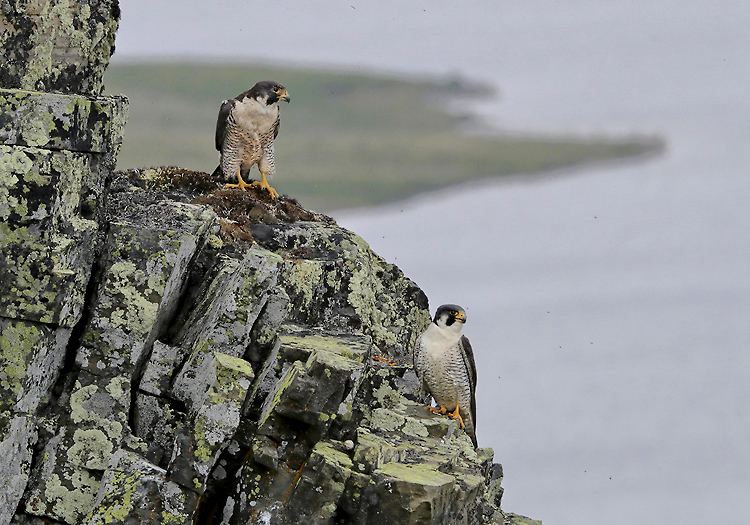
A site of nesting Peregrine Falcons of the American sub species “Tundrius” is not far away from our first camp. This arctic sub species show typically a very light breasted male.
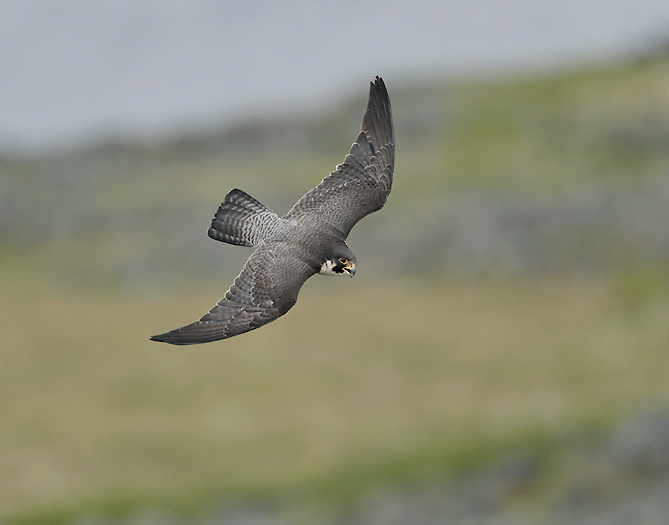
The Peregrines are as we know eminent in the air. For more new Peregrine Falcon images, please see the Peregrine Falcon gallery.
This first camp give us sightings of tundra Grizzly Bear and two Wolves that followed three Caribou on their migration south.
We clearly understand that we are at higher latitudes when we are surrounded by hordes of bloodthirsty mosquitos. Bug jackets on!
Other common birds of the tundra here are Harris`s Sparrow and White-crowned Sparrow. The Harris`s Sparrow is Canada`s only endemic breeding bird.
After a couple of days we head downstream in our canoes, -some headwind in the wide areas of the river force us to use real muscle power. Half a day later we arrive a remarkable archaeological site at the tiny islet of “Nadlok”. The islet is placed in the middle of the river and the name means “the place where dear cross”. Seeing the landscape it is very understandable. The islet is the only permafrost free land here, and is caused by the surrounding water on all sides. On the islet we see remnants of several hundred years old inuit camp sites used in conjunction with Caribou hunting. Meat was air dried and dug into the cool ground here and stored. Near the entire islet is covered with Caribou bones and antlers as deep as at least half a meter down into the ground. The indigenous people used this place at least from the start of “The little ice age” around year 1450 A.D. when the sea ice in the Coronation Gulf and Bathurst Inlet stayed all year around and gave less sea mammals to hunt.
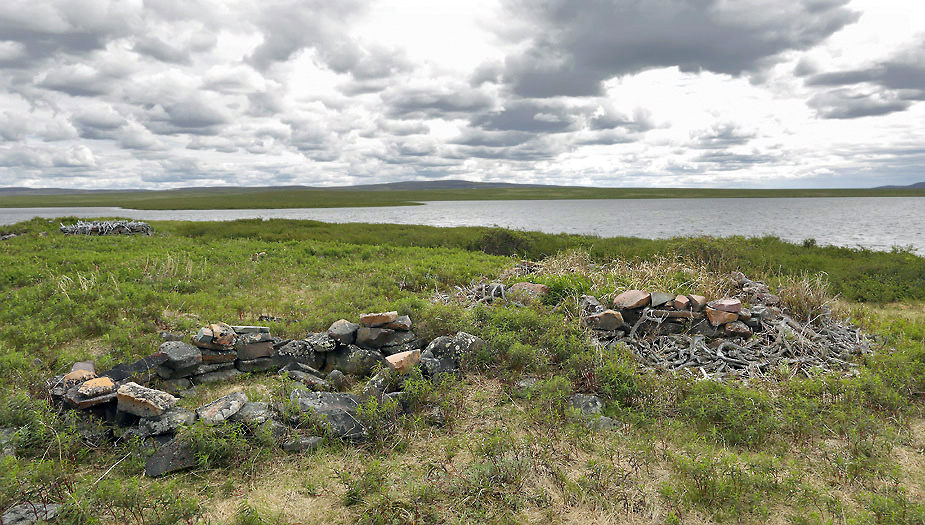
Ancient dwelling place on Nadlok. The antlers was original placed on top of the stones to make the wall higher, thereafter hides was placed over.
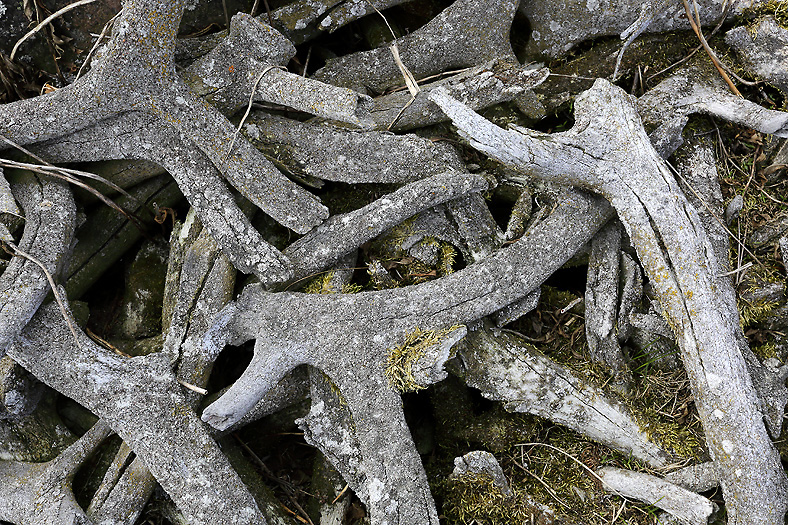
Some of these antlers on Nadlok are probably hundreds of years old.
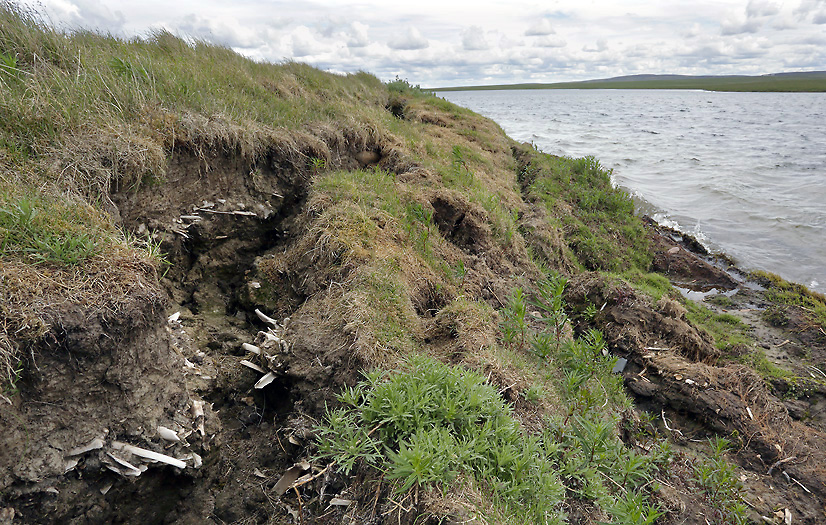
Caribou bones on Nadlok appear as the earth bursts and erodes away. For more images of arctic archeological sites, please see the Archaeological Sites gallery.
This upper portion of the river is in general the most productive, and quite rich of birds as well. Common birds here are Long-tailed Ducks, Northern Pintail, Northern Shoveler, Herring Gulls, Ringed-billed Gulls, Arctic Terns, Red-necked Phalaropes, Semipalmated and Least Sandpipers etc.
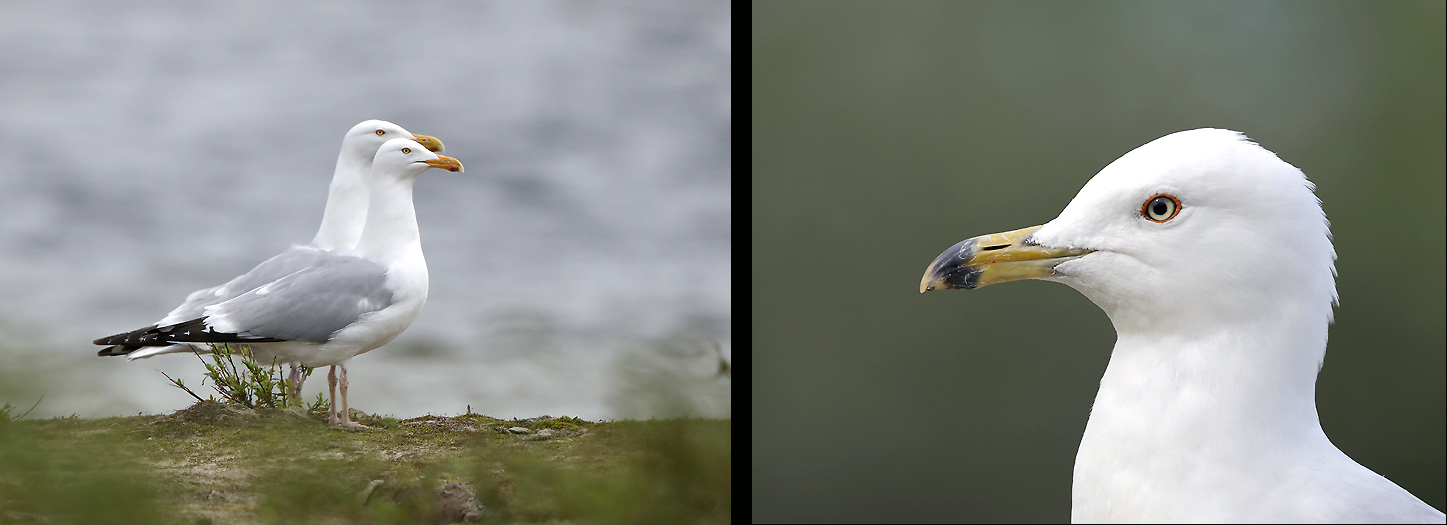
Herring Gull (“Smithsonian”) and head portrait of Ring-billed Gull.

Northern Pintail (males) and Long-tailed Ducks.
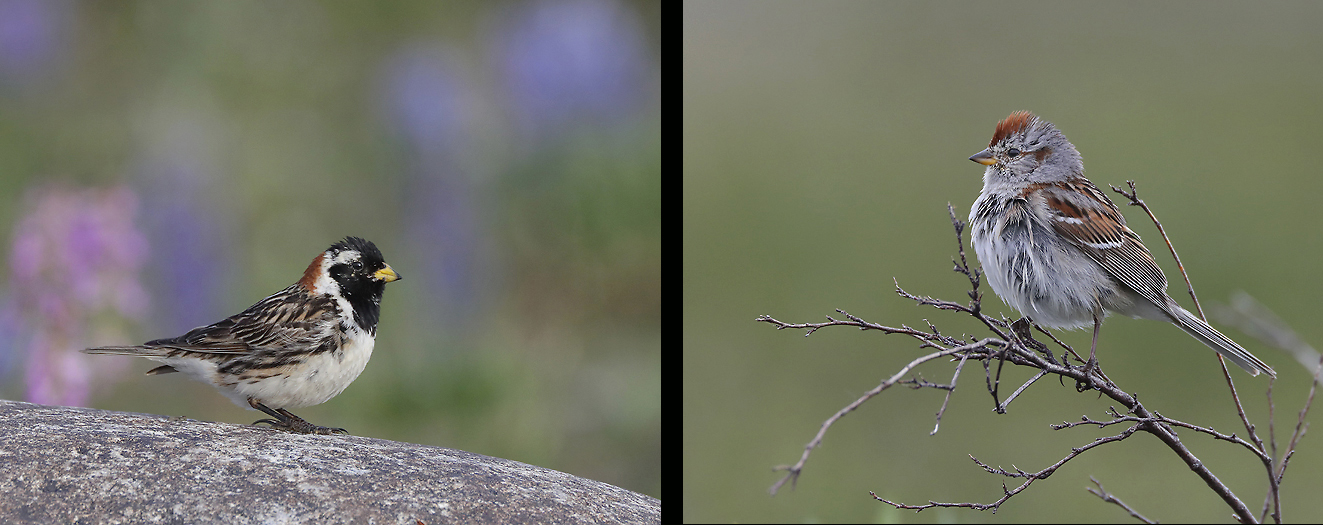
Lapland Longspur are also character species here, American Tree Sparrow is sporadic observed.
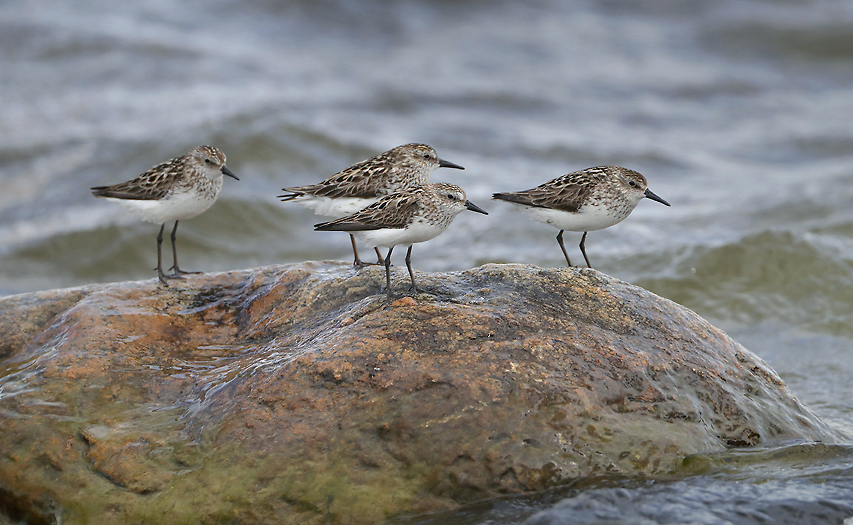
Semipalmated Sandpipers are the most common of the waders here. These photographed at Nadlok.
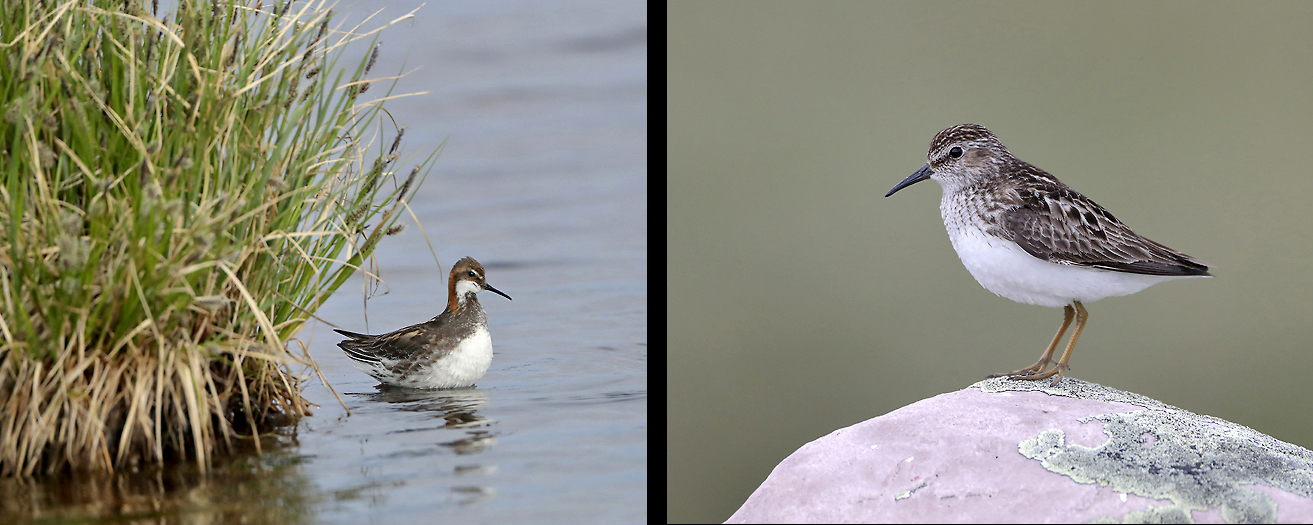
Red-necked Phalarope and Least Sandpiper.
After some days we continue our journey downstream. The river is calm here and with few rapids. We keep our eyes both on the river itself and along the sides in case of interesting wildlife shows up, but nothing exciting to see today.
We have a rest on a small island covered with Arctic Lupins before we continue further on.
Later this day we arrive one of our planned main campgrounds. There should be chances of seeing Wolves as they frequently den here. We drag the canoes high up on land only 10 meters before the biggest rapids of the river in the upper part. After setting up our tents we hike around in the area. We see lots of Caribou tracks (mainly old), and also fresh Grizzly and Wolf tracks.
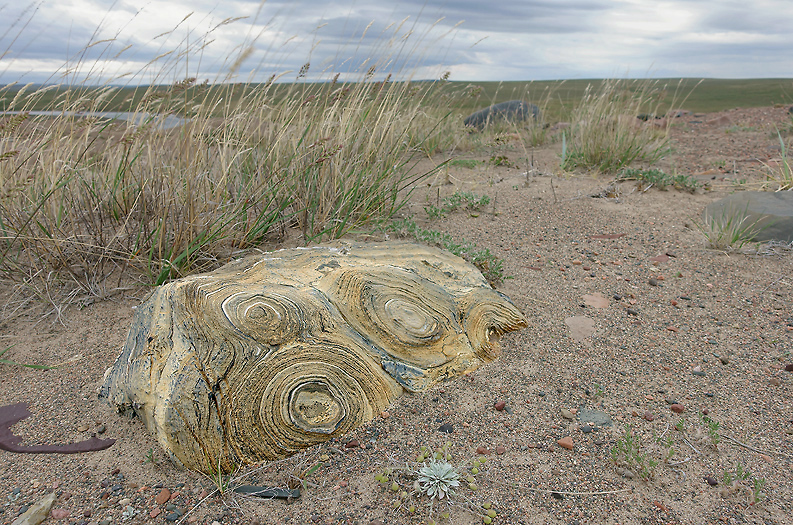
Grinding of rocks caused by moving sand from the huge dunes here. Different hardness of the rocks cause interesting patterns.
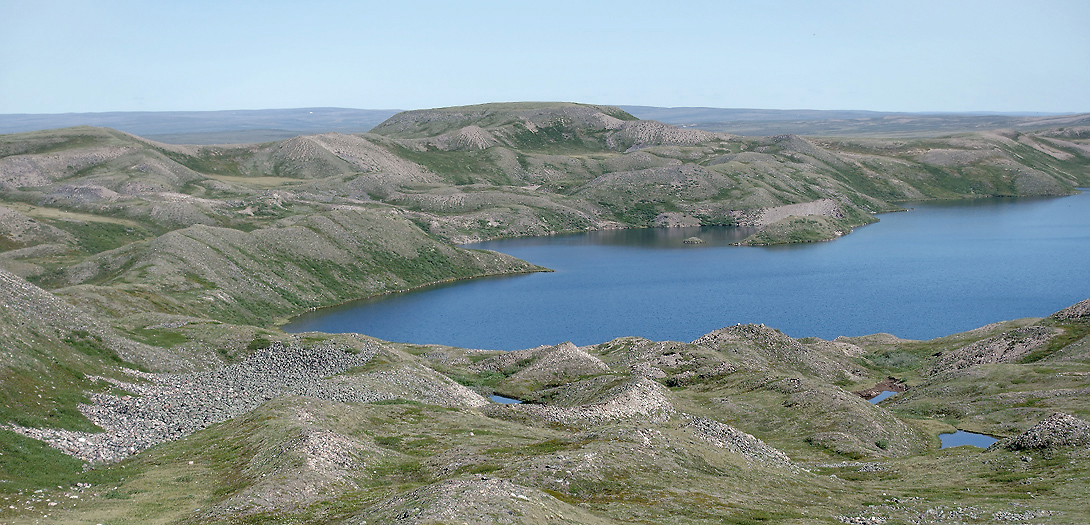
Part of this beautiful landscape.
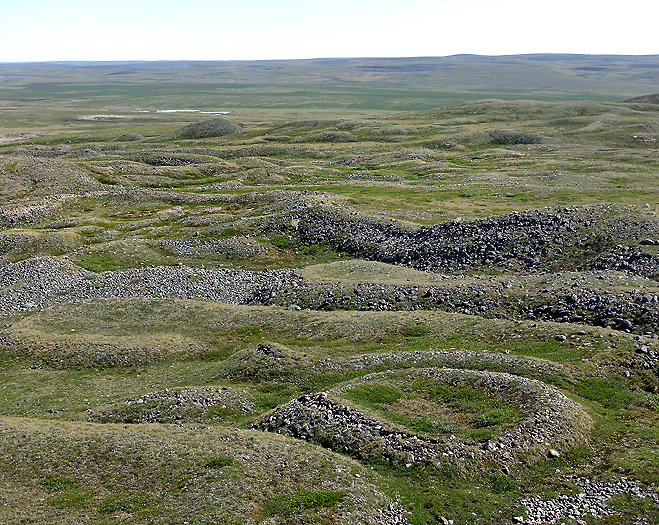
Deposits from the last ice age that ended approximately 12.000 years ago.
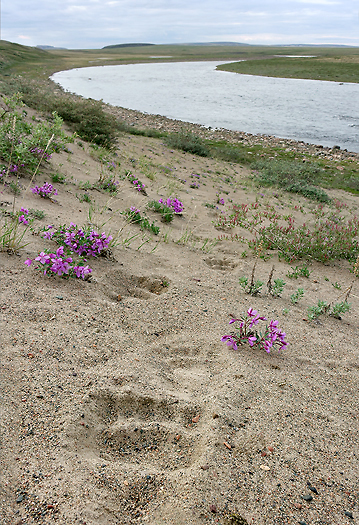
A grizzly Bear recently passed by here.
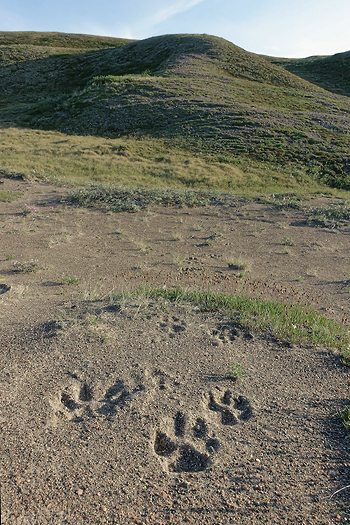
The area is also obvious occupied by Wolves. Fresh tracks of two of them.
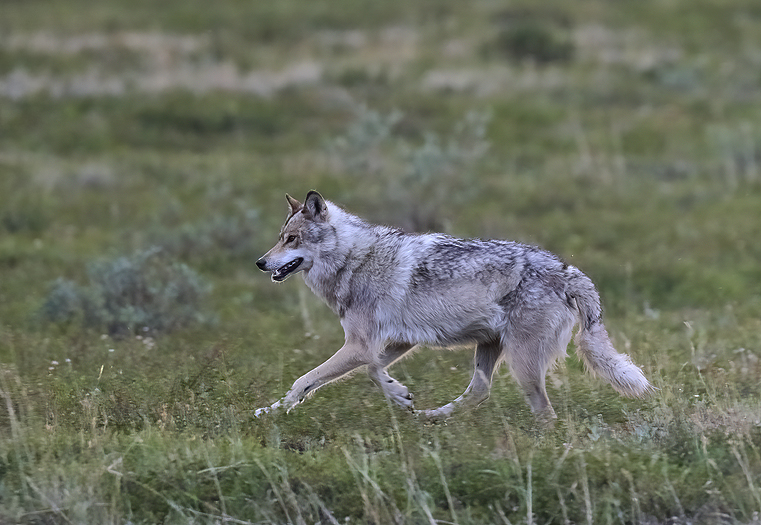
Adult Wolf. The Wolves here in the Barrenlands differ in color from grey to near white. The number of Wolves have been reduced due to the decline of the Caribou population.
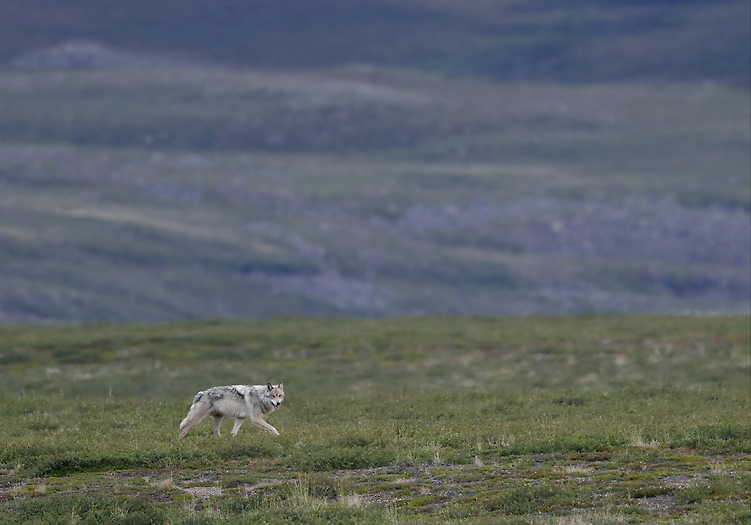
Adult Wolf in big landscape. For more new Wolf images, please see the Wolf gallery.
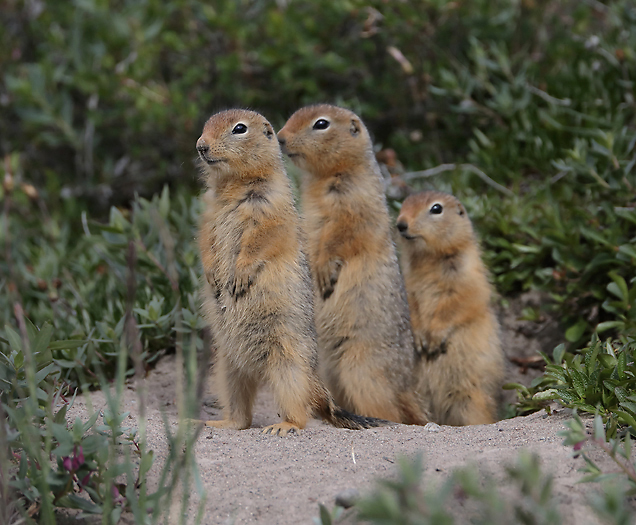
Three good friends. The Arctic ground Squirrels are common all over the Barrenlands. These animals have the deepest hibernation of all mammals on earth, where i.e. the core body temperature goes down to -3°C, and with only one heart rate drops to 1 BPM during this time. Every third week the body temperature increases to normal (36,4°C) for a period of 12-15 hours before dropping low again.
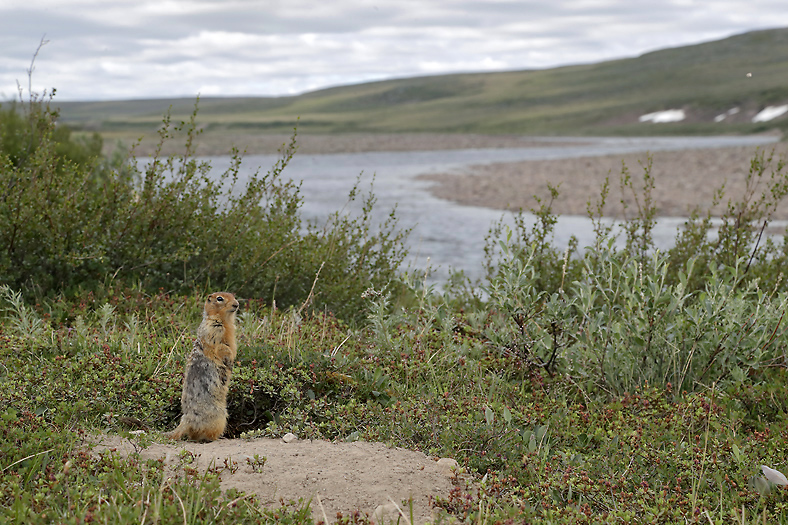
Arctic ground Squirrel. For more images of these interesting mammals, please see the Arctic ground Squirrel gallery.
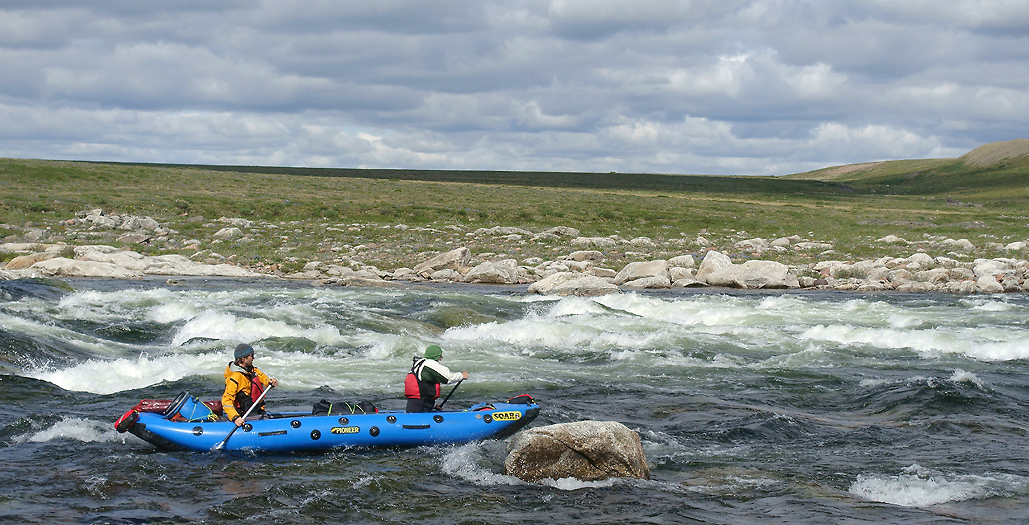
The journey continues. The SOAR canoes are steady and well suitable for the task.
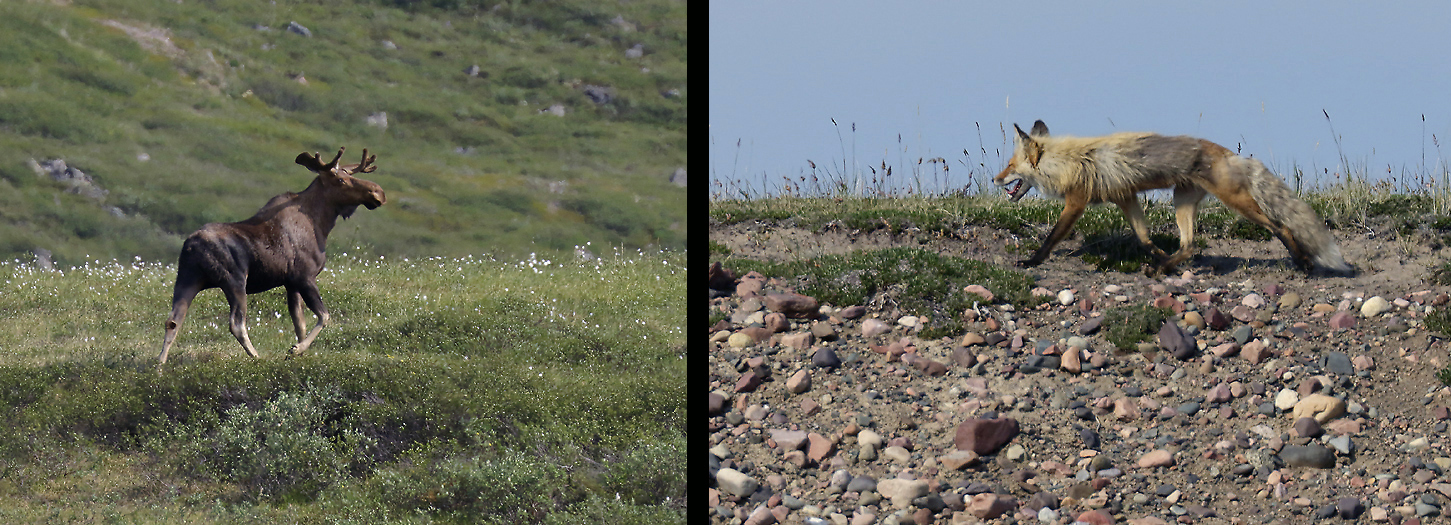
Moose and Red Fox along the route. For more images of Moose and Red Fox, please see the Moose gallery and the Red Fox gallery.
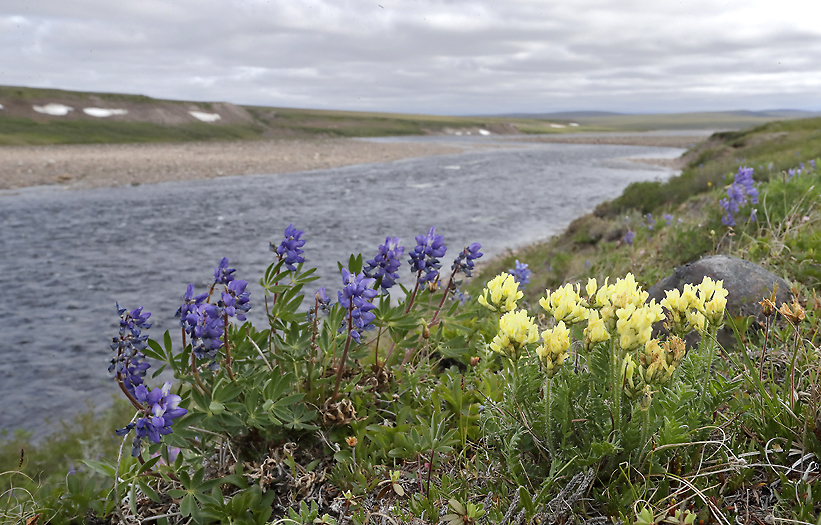
A few weeks a year the landscape here lightens up with beautiful vivid colors. Here Arctic Lupin (left) and Field Locoweed (right).
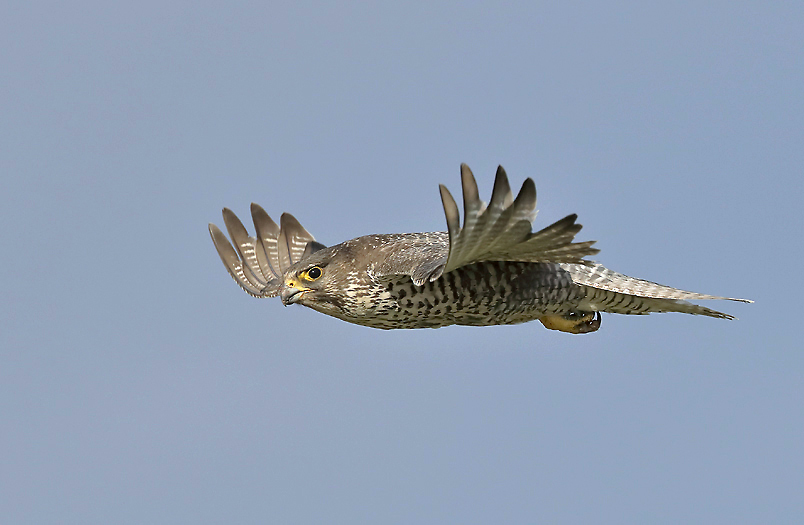
Some reddish cliffs along the way was inhabited by Rough-legged Hawks, Peregrine and Gyr Falcons.
The Gyr Falcons here used to be white phased, -now the site is inhabited by grey-phased. Here the female Gyr Falcon. For more new Gyr Falcon images, please see the Gyr Falcon gallery.
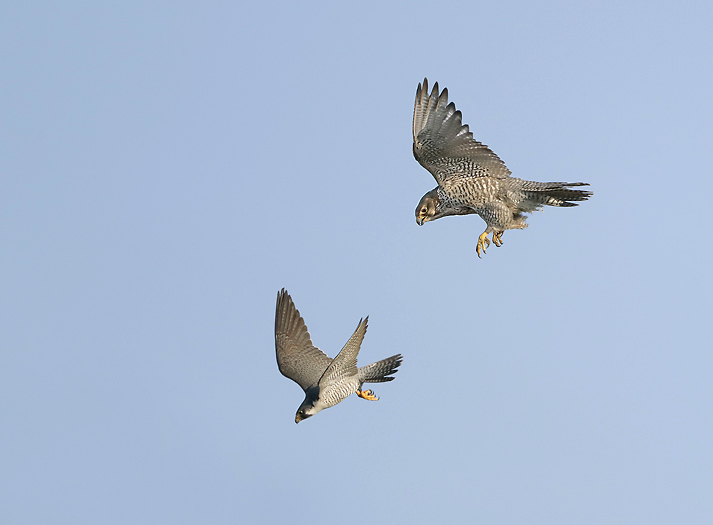
Peregrine Falcons nests only 100-150m away from the Gyr Falcons, and with regularly confrontations.
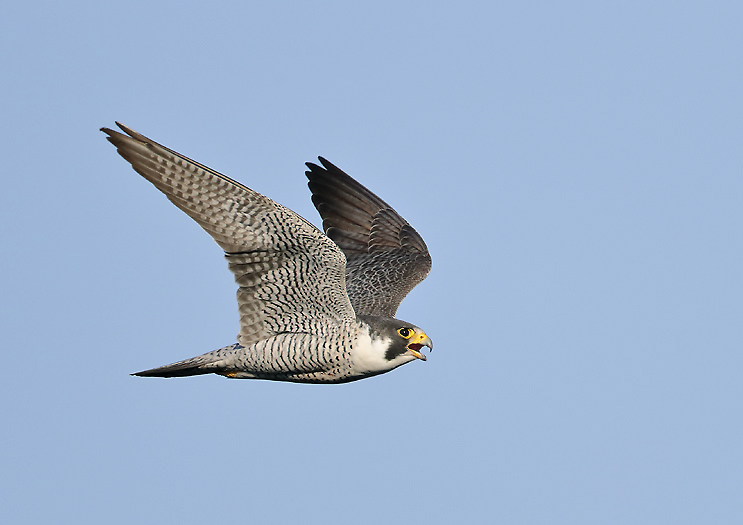
Male Peregrine Falcon (subspecies “Tundrius”).
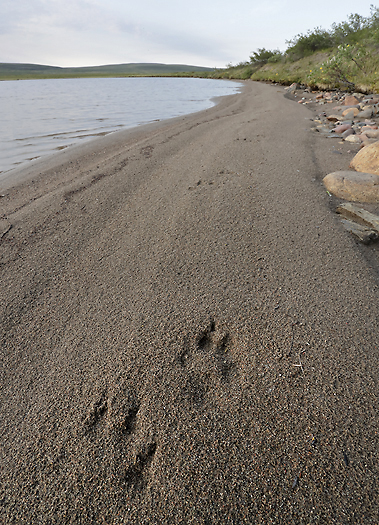
The river widens out and on the shore here we see more Wolf tracks. A white Wolf shows up, -and disappear.
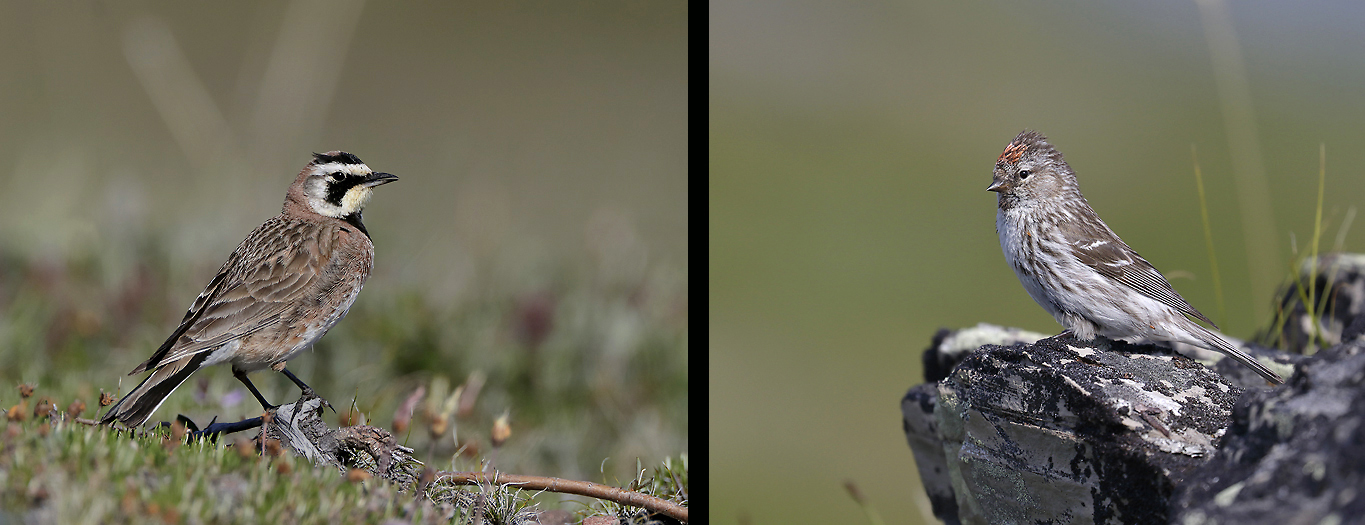
Horned Lark and Common Redpoll (Hoary Redpoll is also occurs).
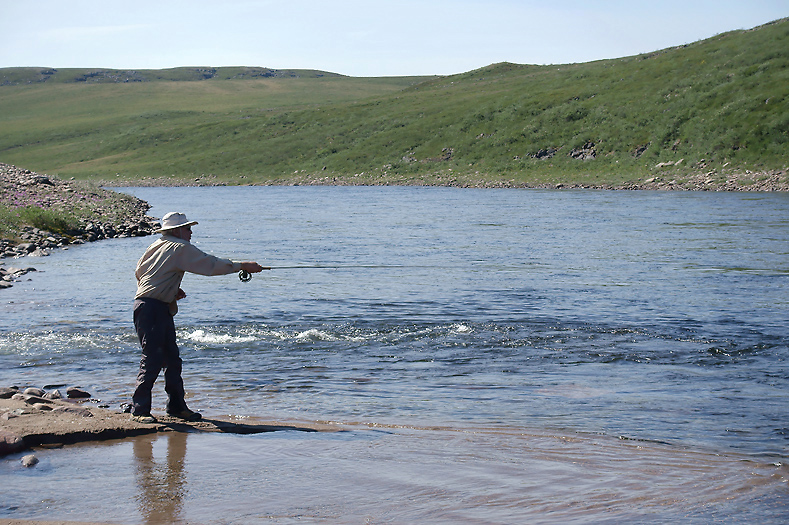
This river is also great for fishing. Jim got i.e. a 7kg Lake Trout after only a couple of casts with his fishing rod.
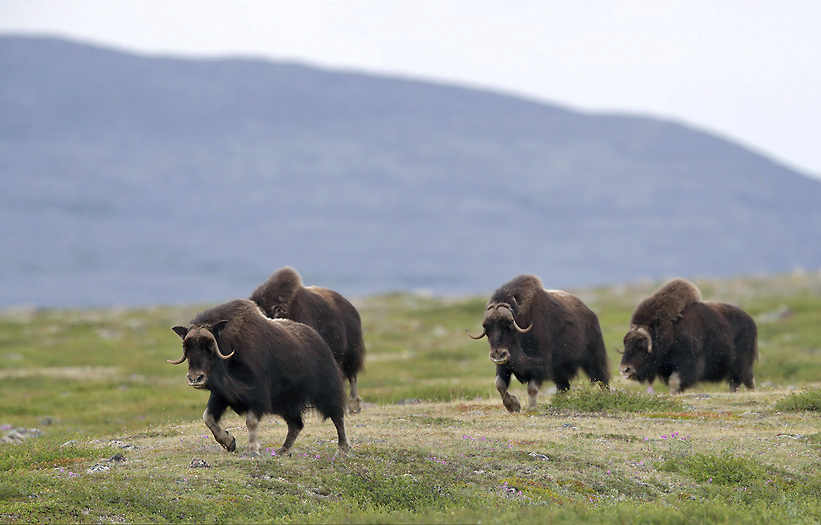
This huge land also inhabit Muskoxen. This herd contained 25 animals (including 2 large bulls and 9 calves). For more new Muskox images, please see the Muskox gallery.
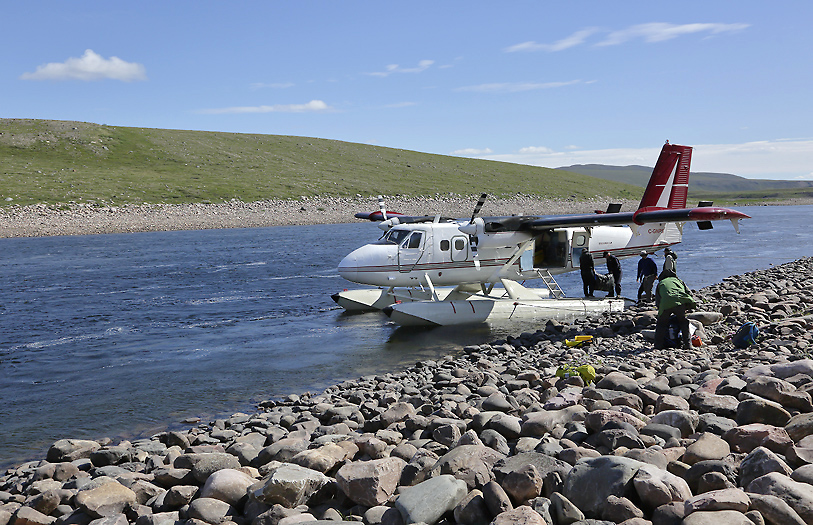
Ready for the return! Not far away from where the topography changes to a much more rugged and mountainous terrain we are picked up on the river. The wildlife is poorer on this last part of the river, -so we had earlier decided not to spend time there at all. The pilots had some problems finding us, -and the plane arrived Yellowknife 7 hours after take-off there this morning for our pick up.
Per Michelsen

